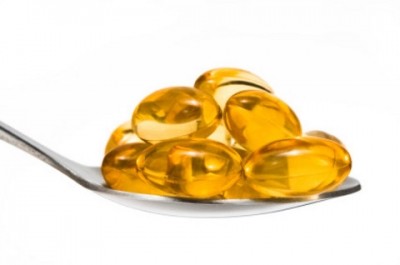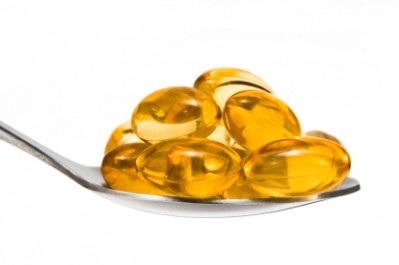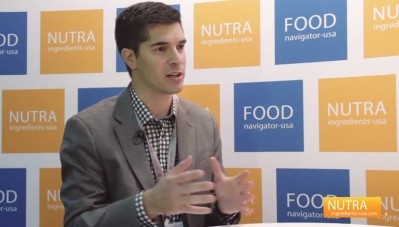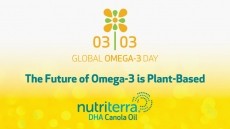Do single-ingredient groups help convey industry's message, or contribute to the cacophony?

GOED as the example
In this new era of uncertainty around regulation and doubt about how much trust consumers really have in dietary supplements, members of industry have increasingly looked at the Global Organization for EPA and DHA Omega-3s (GOED) is a shining example of what a single-ingredient group should look like. GOED came together, driven in no small measure by Robert Orr, then-CEO of Ocean Nutrition Canada (now part of DSM) to first, to get some agreement in the industry about what an omega-3 product should look like on the shelf.
Under Orr’s leadership, the competing omega-3s companies were able to come together to, in effect, make a bigger pie for all them to divvy up. From its beginning GOED has now grown to hundreds of member countries on every continent. The organization has served as an effective information source for the mainstream media, and has been able to move in a timely fashion to respond to industry threats. The most recent of these was the drop in the omega-3s market in the US. GOED has managed to solicit enough funds from its members to launch a national ad campaign to try to turn that around.
Clear mission
Having that sense of mission is one of the facets of the organization that underpinned its early and ongoing success, said GOED executive director Adam Ismail.
“There were other single ingredient trade associations before GOED. What was different about us is that we banded together to solve a couple of clear issues. Those were getting the qualified health claim and creating the GOED voluntary monograph,” Ismail told NutraIngredients-USA.
Ismail said he gets inquiries frequently from industry insiders about what makes GOED tick and how they might duplicate its success with other ingredients.
“I tell them you have to basically identify what the problems are that are holding the industry back. If you can get some consensus around those issues, that is a key to being successful,” he said.
“If quality or variability in quality is a problem that could hold the market back, then it is something that needs to be addressed,” Ismail said. In GOED's case, prior to the inception of the monograph, the quality of oil from brand to brand and from country to country was highly variable, and there was little agreement as to how to define quality in the first place.
“It wasn’t really facilitating the growth of the market if there was a company could test products against a set of standards that wasn’t agreed to by everybody else,” he said.
Message comes first
Another ingredient that may shortly be the subject of a single-ingredient association is Co Q10. Scott Steinford, who spent a number of years at ZMC-USA, one of the manufacturers of the ingredient, has been floating the idea of forming a CoQ10 association, most recently at the Expo West trade show in Anaheim.
Quality is no longer much of an issue, Steinford said. The sector has shaken out to a small number of large companies in China and one based in the US making high quality material, he said.
“I have been involved with CoQ10 since 2000 and had the good fortune to be involved with the major manufacturer,” Steinford said. “I have visited all of the major companies and I know what kind of quality manufacturing they do. I was involved with the industry when there was a shortage and there was counterfeit material and price gouging and a lot that went wrong.”
“The association would be formed both for proactive and reactive reasons. From 2004 to about 2006 there was a shortage with all of the attendant problems and we would want to head that off in the future. We do have to address the issue of quality and be transparent about it,” he said.
The market has expanded substantially in his time in the sector, Steinford said, growing from about 39 metric tons a year in the early 2000s to more than 600 tons today. But much more could be done to foster the message of the importance of the ingredient. And a major opportunity is sitting in the industry’s lap—the need for CoQ10 supplementation when consumers are taking statin medications. In Steinford’s view, this opportunity is slipping through the industry’s fingers for want of adequate information at the consumer level.
“The biggest opportunity is education. The dropout rate for statin usage is about 65% with consumers complaining about muscle pain and fatigue. CoQ10 is a key element in addressing that,” Steinford said.
“I have a background in the pharmaceutical industry, and regardless of what ingredient you are talking about, I don’t think the dietary supplement industry is going to put statins out of business. But we can at least help make the use of these drugs less painful and more beneficial,” he said.
Unique ingredient, unique association
CoQ10 is a specialized ingredient with a specialized message. And the uniqueness of an ingredient can be a driving force behind the need for a specialized organization as much as the need to address specific problems. That’s the view of George Paraskevakos, the newly appointed executive director of the International Probiotic Association.
“Probiotics are very unique in themselves. They are live microorganism and are nothing like other dietary supplement ingredients. It takes a specific set of experts who understand probiotics and who know the industry who can come forth an comment on the issues. That is some of the value want to bring, to be able to have influence on the regulatory side of things. We also are trying to consolidate the industry around a set of quality standards that need to be respected,” Paraskevakos said.
No one size fits all
Still, not every ingredient will be well served by having its own association. The potential size of the market can be a determining factor, Ismail said. If it’s too small, individual personalities can loom too large and the competitive fires can be difficult to quench long enough for cooperation to take hold.
“The danger is particularly strong in categories where you have a small market. The consumers you do have tend to be niche consumers. You have to find a way to grow the whole category rather than trying to beat each other up. That can be hard when you have entrepreneurs who are very passionate about their individual product,” he said.
“Not every ingredient needs its own association,” Ismail concluded.
















